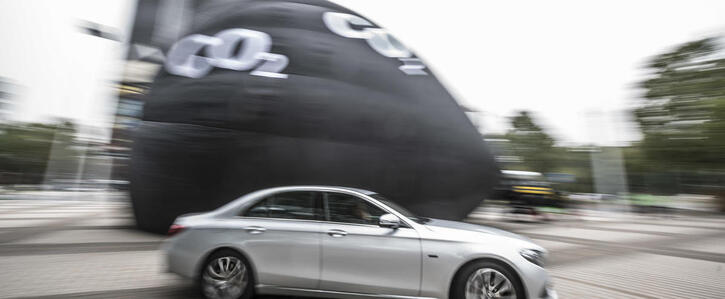To: Government
The future of transport is zero-carbon

Ours is a different future. One that’s far more exciting (and liberating) than anything we’ve seen from the car industry thus far.
Why is this important?
More walking
Walking has been with us since humans first learned to…you get the idea. And still, there are few better ways to get around.
Cities are finally waking up to walking. Car-free zones and pedestrianised areas have transformed shopping districts and town centres from New York to York. London is planning to become the ‘world’s most walkable city’ by improving signage and reconfiguring pedestrian crossings to give people shorter waits and longer crossing times when they cross the road.
Walking isn’t for everyone all the time. But by making walking more attractive and easier, cities can cut congestion, improve air quality and encourage more activity in people’s lives. So many trips we take are under 2 miles (3.2kms). 42% of people agreed that they could just as easily walk these as drive them. There’s so much potential for walking!
More cycling
Cycling is great for cities and the people who live there. Bikes are the original ‘zero-emission vehicle’ so more people cycling helps cities respond to the twin crises of air pollution and climate breakdown.
Cities are dramatically increasing the number of people who cycle by safely separating them from other road traffic. In Copenhagen, 62% of people now cycle to their place of work or study.
More e-mobility
Across the world, companies like Lime, Bird or Jump by Uber are rolling out thousands of electric scooters and bicycles that are paid per ride via a mobile app. These services are potentially great news for cities as they make it easier for people to access public transport.
There are caveats though. These systems need to be built to last, with easy, low-energy mechanisms to keep batteries charged up. And above all, they need to operate in the public interest – integrating into public transport systems without littering the streets or endangering the public.
More renewably-powered public transport
Trains, buses, ferries, trams – these are the backbones of urban transport. A bus can carry far more people than a car, which means it can move far more people through a city.
Fewer cars
Cars are everywhere in cities today. But as we move toward more sustainable transport, this needs to change.
Fewer cars will benefit general human well-being and air quality massively. And it will also free up space. Loads of it.
Parking takes up 200 square miles (517km²) of Los Angeles. That’s enough to fit in a city the size of Singapore. Imagine what we could do without car parks; we could build more green space, more shops, more restaurants. The choices are endless.
But cars will not disappear. We will need them for some journeys – particularly those of us with additional needs. For these, will need car clubs; cars that we rent per minute, and share with everyone. These cars will be electric, and small, to make sure they sip energy rather than guzzle it. And they can be self-driven if you want, sure.
Walking has been with us since humans first learned to…you get the idea. And still, there are few better ways to get around.
Cities are finally waking up to walking. Car-free zones and pedestrianised areas have transformed shopping districts and town centres from New York to York. London is planning to become the ‘world’s most walkable city’ by improving signage and reconfiguring pedestrian crossings to give people shorter waits and longer crossing times when they cross the road.
Walking isn’t for everyone all the time. But by making walking more attractive and easier, cities can cut congestion, improve air quality and encourage more activity in people’s lives. So many trips we take are under 2 miles (3.2kms). 42% of people agreed that they could just as easily walk these as drive them. There’s so much potential for walking!
More cycling
Cycling is great for cities and the people who live there. Bikes are the original ‘zero-emission vehicle’ so more people cycling helps cities respond to the twin crises of air pollution and climate breakdown.
Cities are dramatically increasing the number of people who cycle by safely separating them from other road traffic. In Copenhagen, 62% of people now cycle to their place of work or study.
More e-mobility
Across the world, companies like Lime, Bird or Jump by Uber are rolling out thousands of electric scooters and bicycles that are paid per ride via a mobile app. These services are potentially great news for cities as they make it easier for people to access public transport.
There are caveats though. These systems need to be built to last, with easy, low-energy mechanisms to keep batteries charged up. And above all, they need to operate in the public interest – integrating into public transport systems without littering the streets or endangering the public.
More renewably-powered public transport
Trains, buses, ferries, trams – these are the backbones of urban transport. A bus can carry far more people than a car, which means it can move far more people through a city.
Fewer cars
Cars are everywhere in cities today. But as we move toward more sustainable transport, this needs to change.
Fewer cars will benefit general human well-being and air quality massively. And it will also free up space. Loads of it.
Parking takes up 200 square miles (517km²) of Los Angeles. That’s enough to fit in a city the size of Singapore. Imagine what we could do without car parks; we could build more green space, more shops, more restaurants. The choices are endless.
But cars will not disappear. We will need them for some journeys – particularly those of us with additional needs. For these, will need car clubs; cars that we rent per minute, and share with everyone. These cars will be electric, and small, to make sure they sip energy rather than guzzle it. And they can be self-driven if you want, sure.
